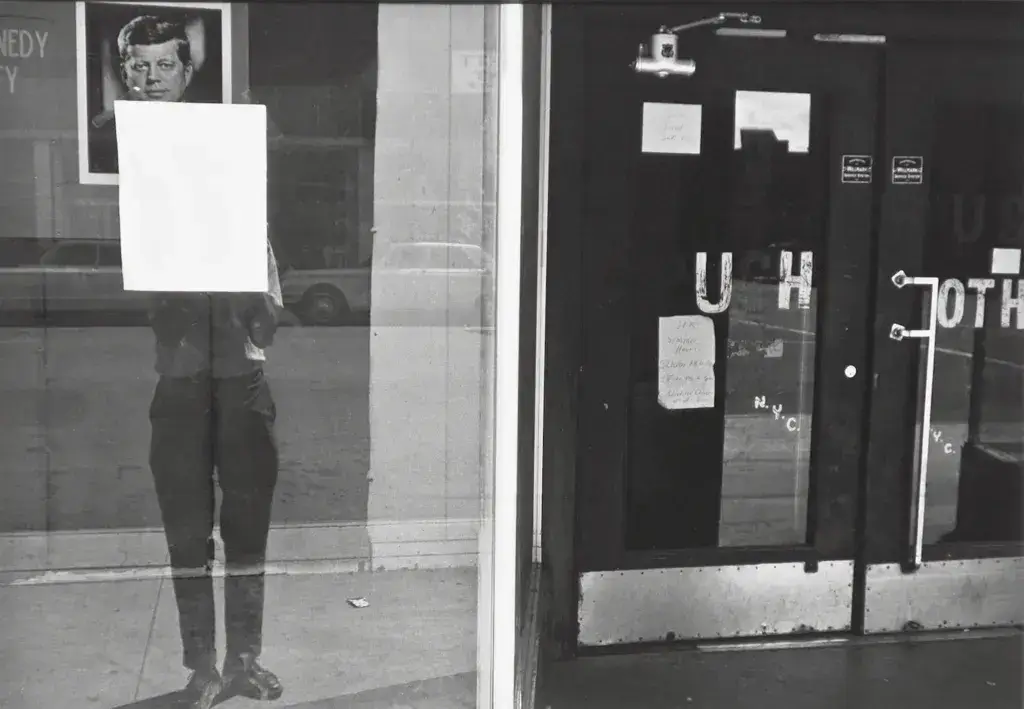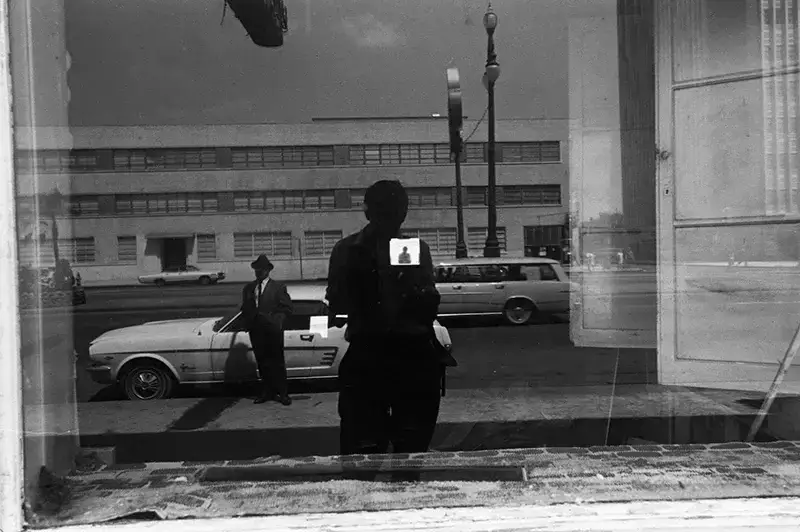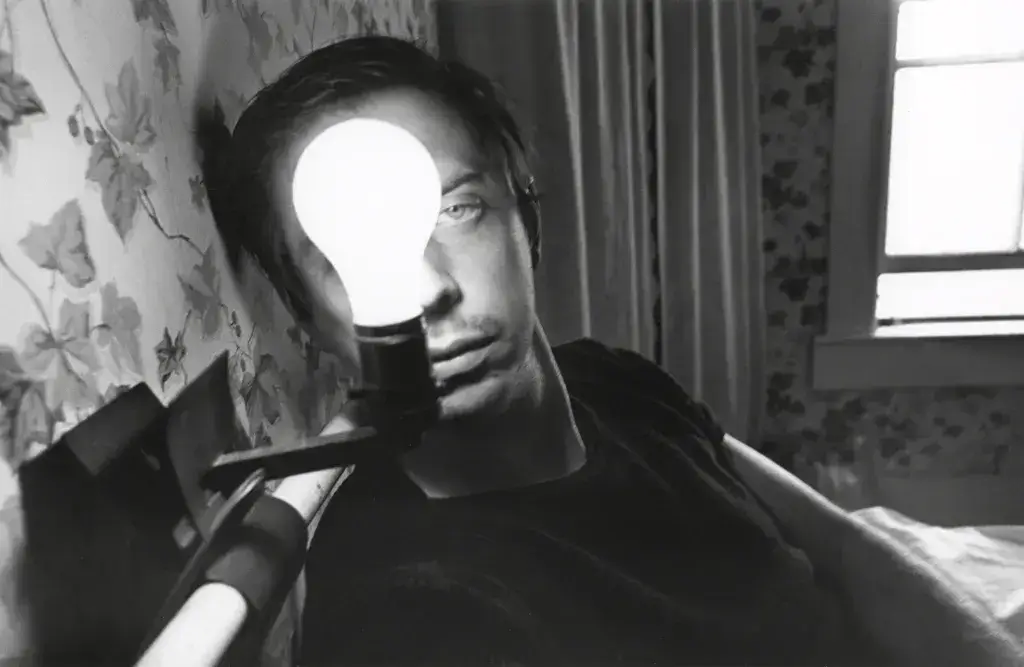Self Portrait
Lee Friedlander
The history of self-portraiture is long and varied. Throughout history self-portraits have been done by all kind of artists. From painters, photographers to sculptors and others. The advantage of the self-portrait is that your self is always at hand and also at very little cost. However, the temptation is great to portray oneself better than reality.

One can look to Rembrandt, one of the leading self-portraitists in painting. In his early self-portraits he wanted to paint beautifully. Giving his customers a sample of his technical skills. His portraits show a succesful young man. And it’s all about perfectly depicting his clothes, face and body. But in his late self-portraits, Rembrandt as a person is disappearing. Rembrandt is no longer the subject of the self-portrait. Instead, the subject is painting. This is also the case with Lee Friedlander’s self-portraits. Lee Friendlander is not the subject but photography.

Lee Friedlander (born 1934) is an American photographer. In the 1960s and 1970s Friedlander evolved an influential and often imitated visual language. With many of his photographs including fragments of store-front reflections, structures framed by fences, posters and street signs. His work is characterized by its innovative use of framing and reflection, often using the natural environment of architectural elements to frame his subjects. He has published some two dozen books of his work.

Self Portrait is his first solo book. Originally published in 1970 by the photographer himself. Friedlander’s work of the 1960s can also be seen as photographic errors. The reflection in a window keeps us from seeing inside; a pole or something else is getting in the way. Noticing that his shadow or reflection often poopped up in his pictures as pesky intrusions. At first, his presence in his photos was fascinating and disturbing. But as time passed he was able to see the humor in it. He decided to make a book about it.

Despite its title it’s not a work about Friedlander, but a work about photography. By including himself in each image, sometimes frontally, more often as a shadow or a reflection, he reminds us that these images are photographs. And when you look at the pictures you can see that they are much more than photographic errors or coincidences. Friedlander consciously plays with the possibilities and limitations of photography.

Self Portrait is a hugely influential book. For instance, Tender by Carla Williams is indebted to Friedlander. Self Portrait is a complex, subtle work that functions as a document of contemporary experience.

Self Portrait
Photographer: Lee Friedlander
Originally published in 1970 by Haywire Press (the photographer’s own imprint)
Hardcover, 104 pages, 48 duotone illustrations
Afterword by John Szarkowski
Considered as one of the greatest photobooks of all time by Source Magazine.
Mentioned in The Photobook: A History Volume 1. Edited by Martin Parr and Gerry Badger
